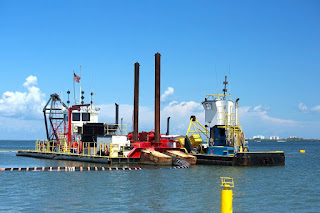In the ever-changing landscape of business and project management, uncertainties are inevitable. While risks cannot be eliminated entirely, organizations employ various strategies to mitigate their impact. This article explores the pivotal role of insurance and risk transfer in strategic risk management, shedding light on how these tools can be leveraged to enhance resilience and protect against unforeseen challenges.
1. Understanding Risk Transfer: A Strategic Maneuver
Concept Overview: Risk transfer is a strategic process wherein an organization shifts the financial burden of certain risks to another party, typically through insurance contracts or contractual agreements. By doing so, the organization effectively transfers the responsibility for potential losses to a third party, reducing its own financial exposure.
Common Mechanisms:
- Insurance Policies: Organizations purchase insurance coverage to protect against specific risks, transferring the financial responsibility to the insurance provider.
- Contracts and Agreements: Businesses may include risk transfer clauses in contracts, specifying how liabilities and responsibilities will be allocated among parties involved.
2. Role of Insurance: Safeguarding Against the Unknown
Insurance as a Risk Management Tool: Insurance serves as a fundamental tool for risk management by providing financial protection against various perils. It acts as a safety net, enabling organizations to recover from unexpected events without bearing the full financial brunt.
Key Insurance Types:
- Property Insurance: Protects against damage or loss of physical assets such as buildings and equipment.
- Liability Insurance: Covers legal liabilities arising from injuries, damages, or negligence claims.
- Business Interruption Insurance: Mitigates financial losses during periods of operational disruption.
- Cyber Insurance: Shields against losses resulting from cyberattacks and data breaches.
3. Benefits of Risk Transfer through Insurance:
Financial Security: Insurance provides a financial safety net, ensuring that organizations have the necessary resources to recover and rebuild in the aftermath of a covered event.
Predictable Costs: Insurance premiums offer a predictable and manageable way to budget for potential risks, allowing organizations to allocate resources strategically.
Legal Compliance: Certain industries and contracts may require organizations to carry specific types of insurance, ensuring compliance with legal and contractual obligations.
4. Strategies for Effective Risk Transfer:
Comprehensive Coverage: Identify and assess potential risks comprehensively to determine the types and amounts of insurance coverage needed for effective risk transfer.
Due Diligence in Contracts: Include carefully crafted risk transfer clauses in contracts, clearly defining responsibilities and liabilities among parties involved.
Regular Review and Adjustments: Periodically reassess risk profiles and insurance coverage to ensure alignment with organizational goals and changes in the business environment.
5. Risk Retention vs. Transfer: Striking the Right Balance
Risk Retention: While risk transfer is essential, organizations must also determine the level of risk they are willing to retain. Balancing risk retention and transfer ensures a customized risk management strategy.
Catastrophic Coverage: Evaluate the need for catastrophic coverage that extends beyond typical insurance policies to safeguard against severe and rare events that could have a profound impact.
Conclusion:
In the strategic landscape of risk management, insurance and risk transfer play pivotal roles in fortifying organizations against unforeseen challenges. By understanding the mechanisms of risk transfer, selecting appropriate insurance coverage, and striking the right balance between risk retention and transfer, businesses can navigate uncertainties with confidence. As organizations continue to evolve in dynamic environments, leveraging insurance and risk transfer becomes not just a risk management strategy but a proactive approach to building resilience and ensuring sustainable success.




